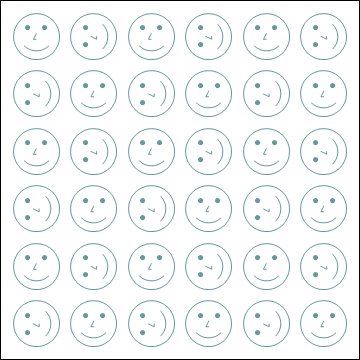Exploring Escher Patterns
What pattern will a square rubber stamp (a motif) and a design idea (a signature) produce? Using intricate motifs and design ideas, Escher created some of the most stunning mathematical art ever. Try your hand at creating some simple patterns here.
First, choose a motif to use. It is suggested that you initially work with the happy face motif because it will best illustrate how the signature affects the Escher pattern.

Many variations are possible in addition to those detailed here.

You can take the tile, as Escher did with ink and woodcut, and use it to create a repeated pattern in the plane. You can generate a nice variety of patterns using the rules shown above. How many different patterns can you find? Different signatures can lead to essentially the same pattern. For example,

and

lead to congruent patterns.Compare the results of these two signatures by entering {{1, 2}, {2, 1}} and {{1, 4}, {4, 1}}, each in turn. These patterns are rotated versions of the same pattern. Escher successfully counted the number of truly different patterns there are when rotations are used as the only variation. How many patterns can you find?
Based on content from The Mathematical Explorer written by Stan Wagon

